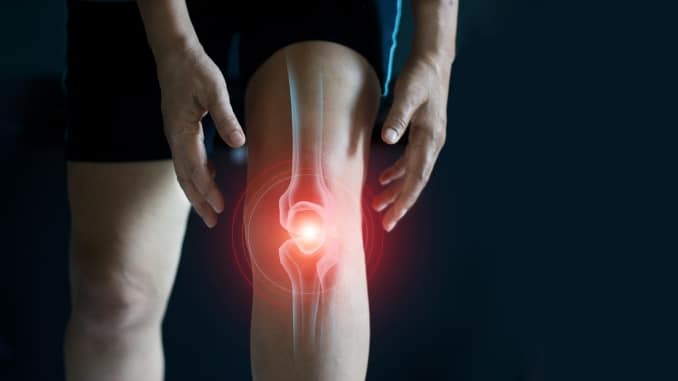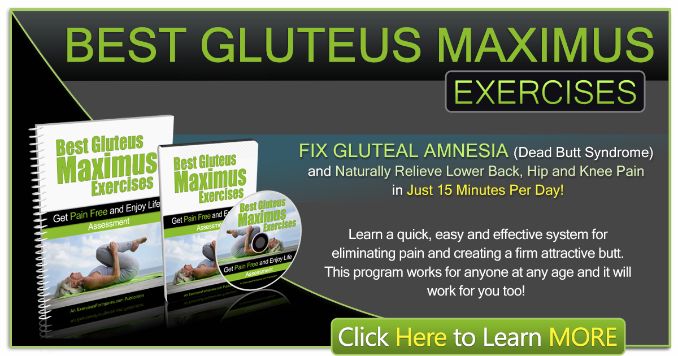Weak glutes contribute to knee pain and instability. When your glutes are weak or underactive, your knees may collapse inward, putting extra stress on them and leading to injuries like knee pain, IT band issues, and ACL problems.
The good news? Strengthening your glutes can help protect your knees and reduce pain. Keep reading for simple, knee-friendly exercises to strengthen your glutes safely and effectively!
Best Glute Exercises with Bad Knees
Glute exercises are beneficial for individuals with knee issues [1], particularly to strengthen the hips and glutes to prevent or improve musculoskeletal disorders related to the knee.
1. Side-Lying Hip Abduction
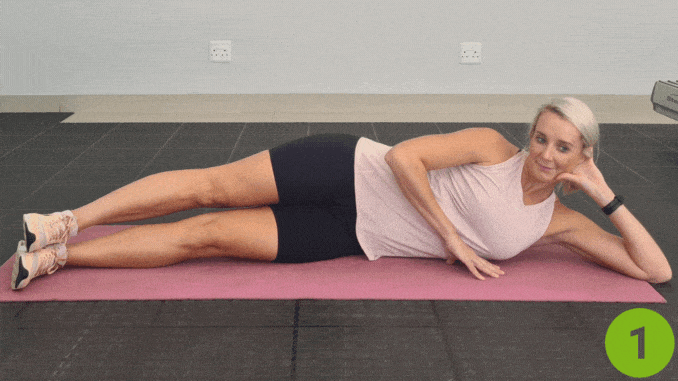
- Lie on your side on the floor with your legs straight and stacked together.
- Maintain good alignment with your head, shoulders, hips, and legs.
- Bend your bottom arm to support your head.
- Tighten your abdominal muscles.
- Lift and extend your top leg towards the ceiling.
- Hold the position for a couple of seconds.
- Lower your leg to return to the starting position and repeat the movement on the opposite side.
2. Glute Bridges
- For this glute exercises, lie on your back on the floor with your knees bent and feet hip width apart.
- Place your both arms on the side.
- Contract your core and press through your heels to lift your hips towards the ceiling, forming a straight line from your knees to your shoulders.
- Hold the position briefly, then slowly lower your hips back to the starting position.
3. Clamshell
- Lie on your side on the floor, bend your arm, and place your hand on the side of your head for support.
- Stack your hips and knees on top of each other while bending your knees toward your chest.
- Keeping your feet together, lift your top knee toward the ceiling as high as you feel comfortable without rotating your lower back. Return to the starting position. Repeat the movement on the opposite side.
4. Hip Circles with Stability Ball
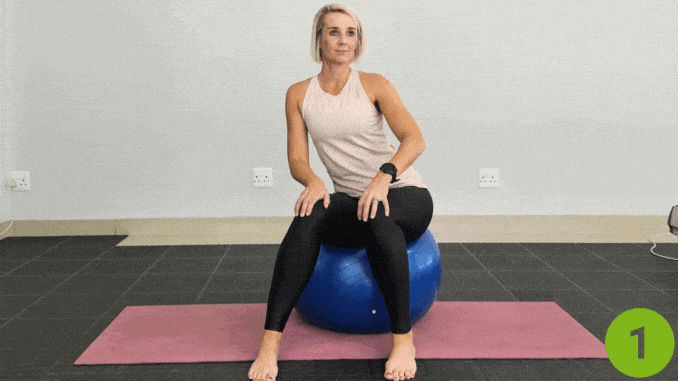
- Begin in an upright sitting position on a stability ball with your knees bent and feet flat on the floor.
- Maintain good alignment with your upper body.
- Place your hands on your lap.
- Tighten your core and rotate your hips in a clockwise direction.
- Repeat the movement in the opposite direction.
To make this glute exercises for bad knees engaging, try spelling your name with the movement.
Dr. Kristie Ennis, a physical therapist, also recommends these exercises to strengthen and stabilize your knee. They target the gluteus medius and maximus, helping to protect the knee joint and prevent pain.
5. Step-Ups
For this exercise, use a stepper or the bottom of the stairs.
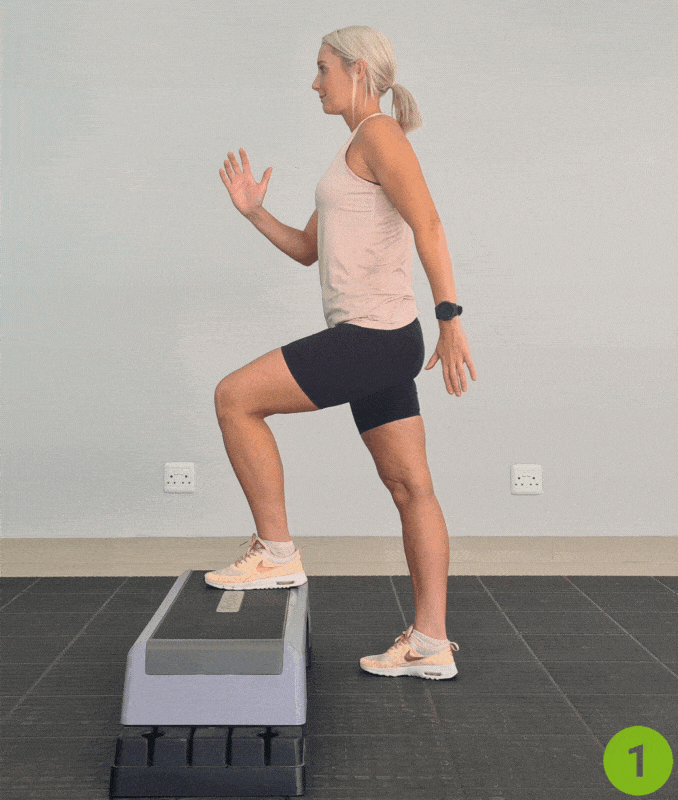
- Begin in an upright standing position in front of a stepper with your feet hip-width apart.
- Maintain good alignment with your head, shoulders, hips, and legs.
- Place your hands on your hips.
- Engage your core muscles.
- Step up with your left foot, followed by your right foot, as you do a marching movement up and down the stepper.
6. Standing Kickbacks
For this glute exercises for bad knees, you can utilize the use of a chair for support if needed.
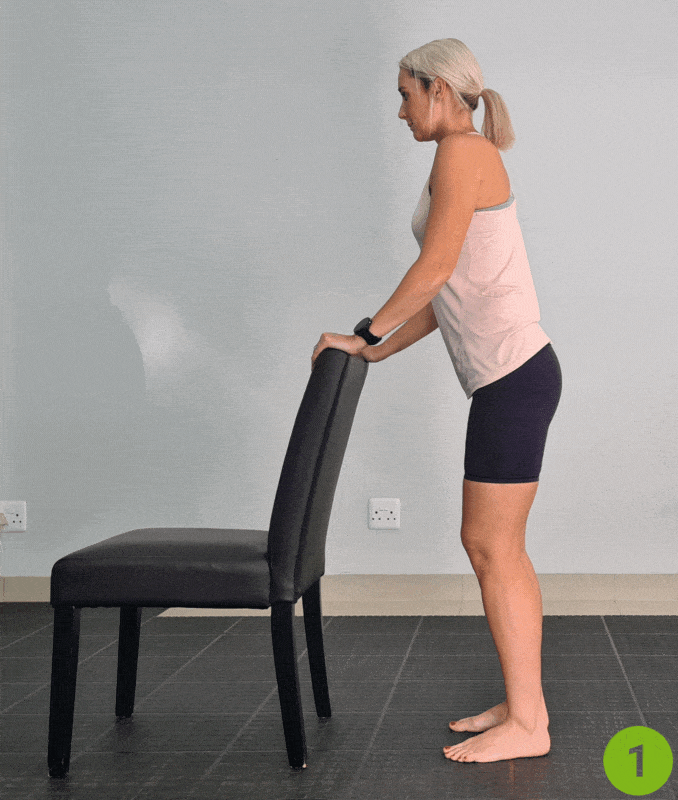
- Begin in an upright standing position with your feet hip width apart.
- Maintain good alignment with your head, shoulders, hips, and legs.
- Place your hands at the back of the chair for support.
- Engage your core muscles.
- Slowly extend one leg backward while keeping your knee straight and your foot flexed.
- Make sure to engage your glute muscles as you lift your leg, aiming to squeeze your glutes at the top of the movement.
- Lower the leg back to the starting position and repeat the movement for a few repetitions.
Switch to the other leg and perform the same motion. This exercise helps activate and strengthen your glutes while being gentle on the knees.
7. Full Superman
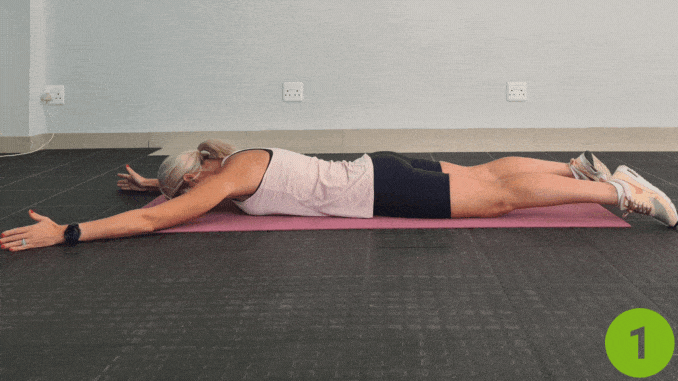
- Lie on your stomach on the floor with your legs shoulder-width apart and your arms extended overhead, maintaining good alignment in your shoulders, hips, and legs.
- Contract your core and lift your upper body and legs by arching your lower back.
- Be careful not to extend your neck.
- Hold this position for 2-3 seconds.
- Return to the starting position and repeat the movement.
8. Standing Fire Hydrants
For this exercise, utilize the use of a chair or a wall for support, if needed.

- Begin in an upright standing position, maintaining good alignment with your head, shoulders, hips, and legs.
- Place your one hand at the back of the chair or wall and the other on your hips.
- Engage your core.
- Lift one leg and bring it out to the side together with your upper body, and begin moving your leg in a circular motion.
- Lower your leg back to the starting position and repeat the movement in the opposite direction.
9. Wall Sits
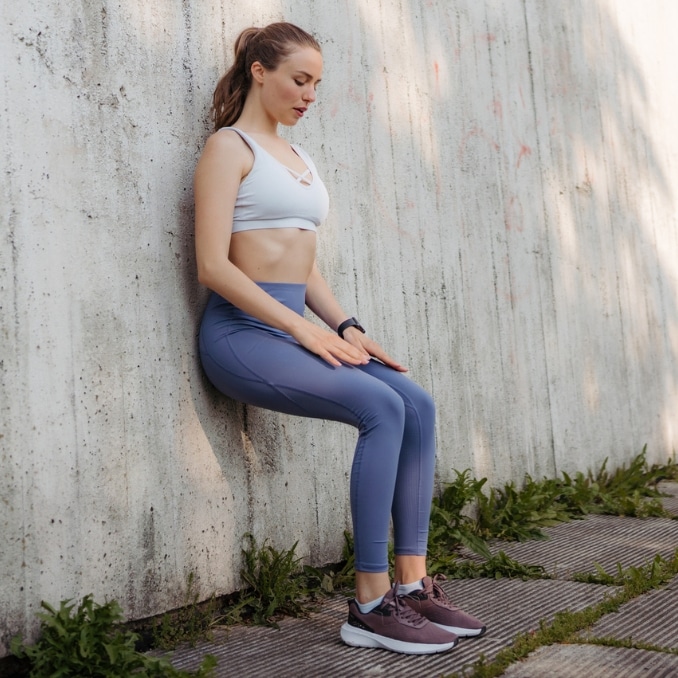
- Begin by standing with your back against a wall, maintaining good alignment with your head, shoulders, and hips.
- Slide down into a sitting position, keeping your knees at a 90-degree angle.
- Extend your arms at shoulder height and hold this position for 20-30 seconds, ensuring your core is engaged and your back remains flat against the wall.
- Return to the starting position and repeat the movement 3-5 times.
10. Hip Thrusts with Resistance Bands
For this glute exercises for bad knees, utilize a resistance band to increase glute activation.
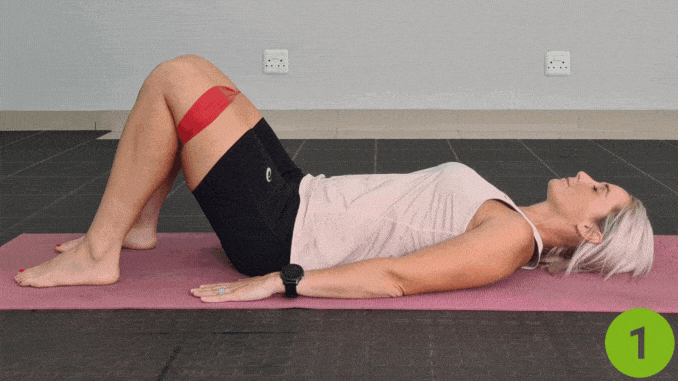
- Begin by lying on your back with your knees bent and feet flat on the floor, hip-width apart.
- Place a resistance band around your thighs, just above your knees.
- Maintain proper alignment of your head, shoulders, and hips, ensuring core engagement.
- Push through your heels to lift your hips towards the ceiling, squeezing your glutes at the top.
- Hold this position for 2-3 seconds before slowly lowering your hips back to the starting position.
- Repeat the movement for the desired number of repetitions.
The Connection Between Glutes and Knees
The glutes, especially the gluteus medius [2], are important for knee stability. When the glutes are weak, the knees can collapse inward (called knee valgus), which puts extra stress on the knees.
This can increase the risk of conditions such as patellofemoral pain syndrome or IT band syndrome. Strong glutes help keep the knees in the right position and absorb shock when we move, reducing the risk of knee problems.
In short, strong glutes are key to keeping your knees healthy and stable during activities like walking, running, and squatting.
Glute Strengthening
Glute exercises are important for strengthening the muscles in your buttocks, especially the gluteus medius, which helps reduce knee pain and improve hip and knee health.
The gluteus medius plays a crucial role in stabilizing the pelvis and maintaining proper hip alignment. When the Gluteus Medius [3] is weak or inhibited (e.g., from prolonged sitting or poor posture), it can lead to knee pain and instability because other muscles (like the hamstrings or adductors) take over.
Incorporating glute exercises into your routine can enhance musculoskeletal health and reduce the likelihood of knee injuries.
Knee pain can happen for a few reasons:
- Weak Glutes: If your glutes are weak, other muscles like your quads or hamstrings take over, putting more stress on your knees.
- Overuse: Repetitive movements or high-impact activities can contribute to knee joint wear and tear over time.
- Poor Posture: Bad posture or incorrect movement, like walking or standing wrong, can cause knee pain.
- Arthritis: Knee joint damage from arthritis can lead to long-term pain and stiffness.
- Previous Injuries: Old knee injuries or surgeries may cause ongoing pain or instability.
- Muscle Imbalance: Weak muscles around the knee, like glutes or quads, can lead to poor movement and pain.
Factors To Consider When Choosing Glute Exercises To Do With Knee Pain
When selecting glute exercises with knee pain, keep these factors in mind:
- Choose glute-focused exercises like bridges to limit knee stress.
- Ensure proper form to avoid extra pressure on your knees.
- Avoid deep squats or excessive knee flexion to minimize strain and discomfort.
- Stop if any exercise causes knee pain and switch moves.
- Start with easy exercises and slowly increase difficulty.
Exercises to AVOID with Bad Knees

- Deep Squats
- Lunges
- Bulgarian Split Squats
- Leg Press (Heavy Resistance)
- Jumping Exercises (e.g., Jump Squats, Box Jumps)
- Step-ups with High Step or Excessive Weight
- Wide Stance Squats
- Heavy Deadlifts
- Knee Extensions
- Running or High-Impact Cardio
- Climbing Stairs
- Standing Calf Raises (With Too Much Weight)
- High-Resistance Cable Kickbacks
- Sprinting or Running Sprints
- Overhead Squats
- Walking Lunges (with Weights)
- Box Jumps
- Frog Jumps
- High-Impact Jumping Jacks
- High-Knee Running in Place
Conclusion
Strengthening your glutes is key for knee health, especially with knee pain or instability. Exercises like glute bridges, clamshells, and fire hydrants target the gluteus maximus and medius, helping stabilize the pelvis, hips, and knees.
These moves improve balance, posture, and mobility while preventing injury. Consistent practice with proper form supports long-term knee health and reduces pain.
Strong gluteus maximus muscles are essential for healthy knees. For the best exercises, make sure to check out The Best Gluteus Maximus Exercises now!
Frequently Asked Questions
How do you build glutes if you have bad knees?
To build glutes with bad knees, focus on exercises that don’t put too much pressure on the knees. Good options include glute bridges, side-lying leg raises, and clamshells. These exercises activate the glutes without stressing the knees. Be sure to do them slowly and focus on good form.
Can I do hip thrusts with a bad knee?
Yes, you can usually do hip thrusts with a bad knee, as the exercise targets the glutes and doesn’t heavily involve the knees. However, make sure you are comfortable and don’t feel pain in your knees while doing the movement. If you feel discomfort, try adjusting your position or using a lighter weight.
How to work the glutes without working legs?
To work the glutes without stressing the legs, try exercises that target the glutes while lying down or sitting. Glute bridges and hip thrusts are good examples. You can also do side-lying leg raises and clamshells, which work the glutes without much movement in the legs.
What exercise is OK for bad knees?
Exercises like swimming, stationary cycling, and seated leg lifts are often safe for bad knees. These movements put less stress on the joints while still allowing you to work your muscles. Always check with a doctor or physical therapist before starting a new exercise routine.

